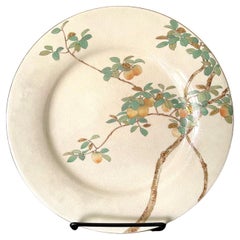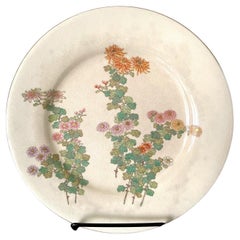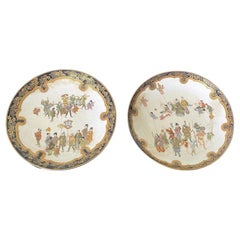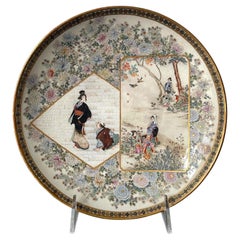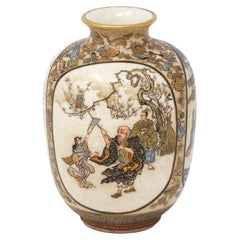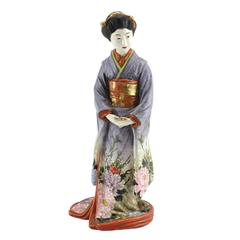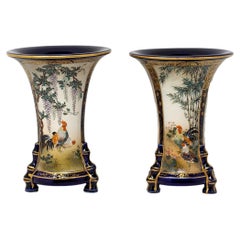Kinkozan Sobei
Antique 1890s Japanese Meiji Ceramics
Gold
Antique Early 1900s Japanese Meiji Ceramics
Ceramic, Earthenware, Pottery, Faux Leather
Early 20th Century Japanese Meiji Ceramics
Ceramic
Early 20th Century Japanese Meiji Ceramics
Ceramic
Early 20th Century Japanese Meiji Ceramics
Ceramic
Antique Late 19th Century Japanese Meiji Ceramics
Ceramic
Early 20th Century Japanese Meiji Ceramics
Ceramic
Antique Late 19th Century Japanese Meiji Ceramics
Ceramic, Earthenware, Pottery
Antique Late 19th Century Japanese Meiji Ceramics
Ceramic
Antique Late 19th Century Japanese Meiji Ceramics
Ceramic, Earthenware, Pottery
People Also Browsed
Early 20th Century Japanese Meiji Vases
Enamel
21st Century and Contemporary Austrian Mid-Century Modern Decorative Bowls
Brass
Antique 19th Century Chinese Qing Sculptures and Carvings
Jade
2010s Italian Side Tables
Onyx
2010s Italian Modern Vases
Marble
Antique 17th Century Chinese Ming Ceramics
Porcelain
Antique 16th Century Chinese Ming Ceramics
Porcelain
Late 20th Century Italian Modern Vases
Blown Glass
21st Century and Contemporary American Modern Commodes and Chests of Dra...
Pine
Vintage 1960s Italian Mid-Century Modern Vanities
Faux Leather
21st Century and Contemporary Italian Modern Sofas
Foam, Wood
Antique Mid-19th Century Japanese Lacquer
Giltwood, Lacquer
Antique 15th Century and Earlier Canadian Natural Specimens
Other
Vintage 1930s Swedish Art Nouveau Cabinets
Beech, Walnut
Antique Late 19th Century Japanese Meiji Ceramics
Earthenware
Antique 1810s English Regency Serving Bowls
Porcelain
Recent Sales
Antique Late 19th Century Japanese Meiji Ceramics
Porcelain
Antique Early 1900s Japanese Meiji Ceramics
Earthenware
Antique Late 19th Century Japanese Meiji Ceramics
Silver
Antique Late 19th Century Japanese Meiji Ceramics
Earthenware
Antique Late 19th Century Japanese Meiji Ceramics
Ceramic, Earthenware
Antique Late 19th Century Japanese Meiji Ceramics
Enamel
Antique Early 1900s Japanese Meiji Vases
Ceramic
Antique 19th Century Japanese Ceramics
Kinkozan Sobei For Sale on 1stDibs
How Much is a Kinkozan Sobei?
A Close Look at meiji Furniture
From 1868 to 1912, Emperor Mutsuhito oversaw an era of transformation in Japan. Formerly a country of feudalism and isolation, Japan entered an age of modernization influenced by newly established trade and exchange with the West. The Meiji period, or period of “enlightened rule,” also saw the global impact of the East Asian country’s culture. Japanese Meiji furniture was exhibited at expositions from Paris to San Francisco and created for export.
Prior to the Meiji era, furniture was mostly made by commission for the ruling class; now there were new domestic and international markets. European styles like Japonisme appropriated Japanese design while craftsmen in places like Wales and England employed japanning, a varnishing technique that approximated the appearance of lacquer for the surfaces of furnishings.
Meiji furniture made for Japanese homes and buildings constructed in Western styles resulted in taller tables, chairs, cabinets with large drawers and other features. The government invested in areas such as transportation and communication, and because people could freely choose occupations after the restrictions of feudalism, industries of various types were energized by expressive new ideas during those years. Art schools were formed and, for the first time, design was an area of study in the country, leading to the evolution of professional design as a career by the 1890s.
The work of Japanese designers was transmitted widely through lavishly illustrated pattern books that included designs for screens and lacquerware for the home. While screens today may be of use as decorative accents or partitions to ensure privacy in one’s space, Japanese screens were adorned with paintings and were featured in performing arts such as concerts, tea ceremonies and more. The color illustrations that characterize Meiji woodblock prints, a genre of Japanese art that grew out of 17th-century developments in printing and book publishing, depicted the sweeping changes that the era brought to East Asia.
Although it was a time of societal and cultural shifts, a bolstered interest in art and design elevated Japanese craft traditions. From colorful porcelain table lamps with silk shades and hardwood tables decorated with dark lacquer to cabinets featuring iron hardware and inlaid with mother-of-pearl, Meiji furniture showcased Japan’s artistic heritage to the world.
Find a collection of antique Japanese Meiji period case pieces and storage cabinets, decorative objects, wall decorations and more furniture on 1stDibs.
Finding the Right ceramics for You
With their rich and diverse history, antique, new and vintage Asian ceramics offer colorful and sophisticated ways to add flair to any space.
Japanese pottery dates back at least 13,000 years to the Jōmon period. Pieces from the Late Jōmon era display a rope-cord pattern encircling a pot or jug. During the Muromachi period, potters created simple bowls and utensils frequently used in tea ceremonies and were made as both functional and aesthetic objects.
Ceramics made during Japan’s Meiji period, from 1868 to 1912, reflected an explosion of artistic expression propelled by new access to international trade. Details became more intricate and refined, and colors were enhanced with new glazing practices.
Chinese porcelain, meanwhile, is often identified by its shape. Each reign and dynasty had specific shapes and styles that were encouraged by the imperial ruler. During the Song dynasty, for instance, there were four dominant types of ceramic vase shapes: plum-shaped, pear-shaped, cong-shaped (tall and square) and double-gourd.
Chinese ceramics that were made during the Qing dynasty were demonstrative of an expanded artistic expression, with more delicate shapes and a focus on intricate detailing. The shapes of ceramics from this era are thinner, taller and have subtle features like a gentle flare, such as on the mallet-shaped vase.
Later, the 17th- and 18th-century interior design trend of chinoiserie brought Asian paintings and screens, textiles and other art and furniture from the continent into many European homes.
Explore an extensive range of antique, new and vintage Asian ceramics on 1stDibs to find the perfect piece for your home.



